Picture this: you are searching for a local plumber, a new CRM tool, or even the best Thai takeout in your neighborhood. What is the first thing you do?
You Google it – and start reading reviews.
That is not just you. It is nearly everyone. What’s even more telling? While 27% of consumers now use only one website (like Google or Yelp) for reading reviews, the majority – a whopping 74% – check at least two platforms before trusting a business. That means if you are only focusing on your Google Business Profile, you are leaving opportunities (and customers) on the table.
Online reviews are no longer just “nice to have.” They are the new word of mouth. I have compiled a list of 80+ online review statistics to help you understand the local SEO benefits of online reviews.
10 Most Crucial Online Review Statistics
Everyone reads reviews now, and they trust them a lot. These ten stats highlight just how critical online reviews have become for consumers and businesses:
- About 95% of consumers check online reviews before making a purchase – essentially, everyone uses reviews as a shopping tool. This means if your business has no reviews, 95 out of 100 people might pass you over for a competitor with feedback. (DemandSage)
- An overwhelming 93% of consumers report that online reviews impact their buying decisions. It’s not just about reading reviews – people act on them. For instance, if a product’s reviews mention poor durability, you can bet that product will sit on the shelf while shoppers choose a better-reviewed alternative. (GlobeNewswire)
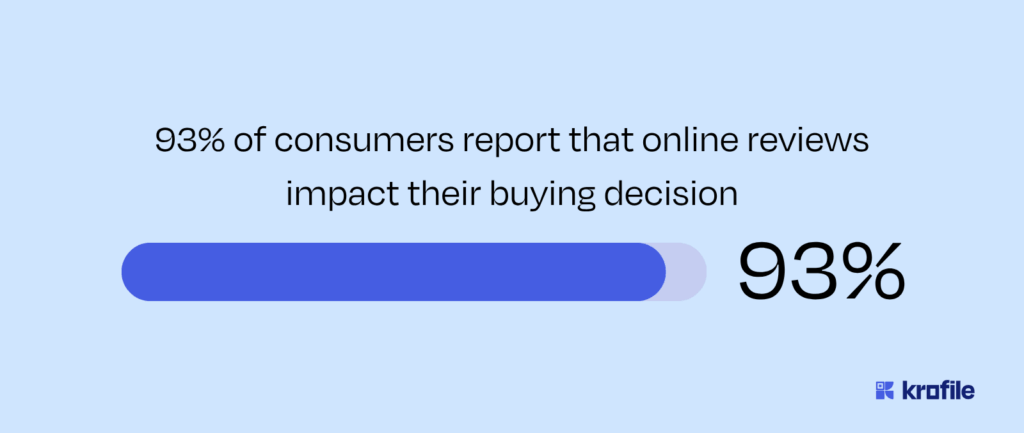
- 84%+ trust online reviews as much as personal recommendations. Consumers place a considerable amount of trust in what reviewers say. That’s right – a stranger’s 5-star review on Google or Yelp can carry as much weight as a personal endorsement from your best friend. (Zippia)
- Stale reviews won’t cut it. 83% of consumers say that for reviews to actually influence them, the feedback needs to be recent and relevant. (Podium)
- About 81% of people read Google reviews for a business before deciding to visit or buy. This jumped from 63% just a few years ago, showing Google’s growing dominance in the review space. If your Google Business Profile lacks great reviews, you’re missing out on a huge chunk of customers. (BrightLocal)
- Unfortunately, not all reviews are honest. An estimated 30% of online reviews are fraudulent or fake, and consumers are catching on to this. (Bottom line: don’t even think about buying fake reviews – customers are wary, and you risk your credibility.) (WiserNotify)
- Nearly 94% of consumers say they have steered clear of a business after reading negative reviews. Negative feedback doesn’t just “sting” – it actively drives away potential customers. (ReviewTrackers)
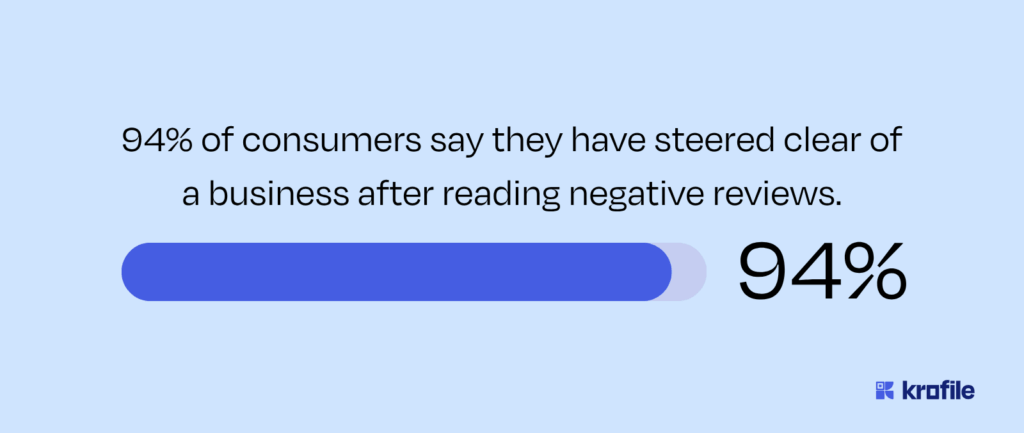
- Studies show that a one-star increase in a business’s average rating can lead to a 5–9% increase in revenue. Think about that – climbing from 3 stars to 4 stars might translate into nearly 10% more income. (PracticeBuilders)
- Positive reviews super-charge conversions (up to 3-4x!). Glowing reviews don’t just look nice – they drive action. One analysis found that adding positive reviews can increase conversion rates by 380% – meaning customers are nearly 4 times more likely to buy. (Fera)
- 86% of employees and job seekers research company reviews before applying. It’s not just consumers – your reputation matters to future hires too. (Glassdoor)
Positive Online Review Statistics
Positive reviews are pure gold for your business. They not only make you look good – they actively attract more customers and revenue. Here are some uplifting stats about the impact of good reviews:
- 58% of consumers say they would spend more money (or travel further) to patronize a business with positive reviews. (GlobeNewswire)
- A high average star rating is a must-have. Over a third of consumers (38%) insist on at least a 4-star average before they’ll consider doing business with a company. (Podium)
- Quantity matters, too. A study found that businesses boasting 200 or more total reviews generate 2x more revenue on average than those with fewer reviews. (FindStack)
- Review signals account for 15% of Google local SEO ranking factors. Good reviews don’t just convince customers – they help you rank higher in search. (ChatMeter)
- According to Uberall, just a 0.1-star rating increase (for example, from 4.2-star to 4.3-star) can increase conversion rates by 25%. Every fraction of a star counts. (Uberall)
- On average, consumers report spending 31% more on a company that has “excellent” reviews. We’ve all been there: you see a top-rated product or service and feel more confident splurging on it. Businesses with stellar reviews often enjoy higher transaction sizes because buyers trust they’ll get value for their money. (Invesp)
- 70% of shoppers are more likely to buy a product if it has positive online reviews. In short, good reviews function like personal recommendations at scale – tipping undecided customers over the line. (Search Engine Land)
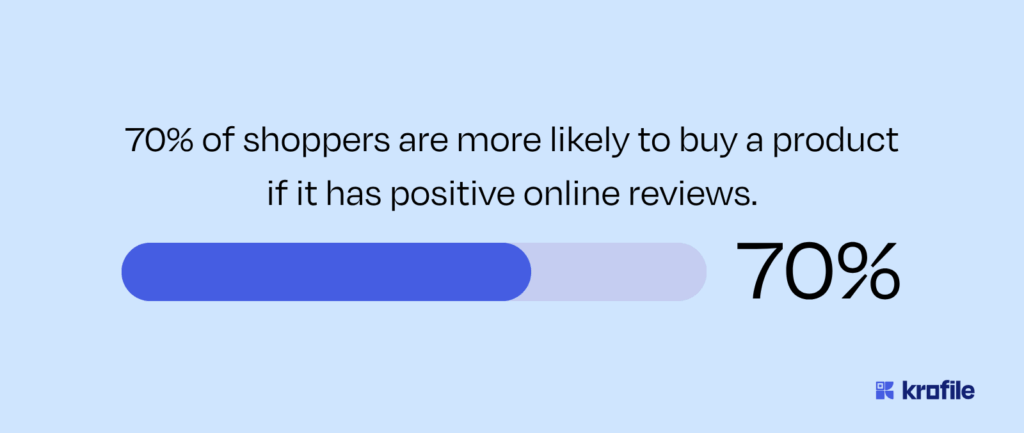
- Studies show that featuring customer reviews on product pages can increase conversions by up to 3.5 times. That means for every one person converting before, five might convert after adding reviews. (Oberlo)
Impact of Negative & Fake Reviews
Not all reviews are rosy, and the dark side of online reviews can seriously hurt your business if unmanaged. Let’s look at some stats on negative reviews, fake reviews, and why responding matters:
- 94% of consumers say that a single negative review would make them avoid a business! And if there are multiple bad reviews? Forget it – the loss in potential customers can be tremendous.
- Failing to reply to your reviews can increase customer churn rate by 15%. Why? Because people assume you don’t care. (ChatMeter)
- 56% of customers say that seeing a business actively respond to reviews (especially negative ones) changed their perspective positively. In other words, over half of consumers might give you a second chance if you handle feedback with grace. (Podium)
- 53% of consumers expect businesses to respond to negative reviews within a week, and about a third expect a response in 3 days or less! A prompt reply isn’t just courteous; it is expected to be part of good customer service in the digital age. (ReviewTrackers)
- 67% of consumers are concerned about review fraud and fake reviews distorting the truth. Major platforms are fighting back: in 2023, Google reported blocking or removing over 160 million fake reviews for policy violations, and sites like Yelp and TripAdvisor remove 5–10% of submissions that appear fraudulent. (Capital One Shopping)
Also read: Don’t Buy Reviews for Your Business—Do This Instead
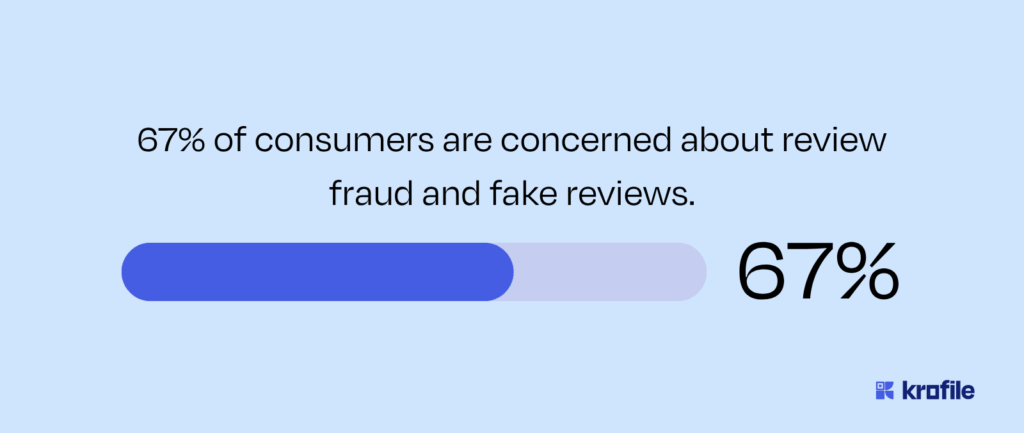
Online Review Statistics by Industries
Online reviews play out differently across various industries. Let’s break down some key stats (and insights) for a few major sectors to see how reviews drive decisions in each.
Online Review Statistics for Service Businesses (Local Services)
- 98% of consumers read online reviews for local businesses, and 76% report doing so “regularly” when seeking a local service provider. (Shout About Us)
- 87% of consumers used Google to evaluate local businesses in 2022 (up from 81% in 2021), while use of Facebook for local business reviews fell to 46% in 2022 (down from 54% in 2020). (BrightLocal)
- Only 9% of consumers say they would consider using a business with an average rating of 1–2 stars. In the service industry, a poor rating or bad review can drastically repel potential customers. (Podium)
- The average local business has about 39 Google reviews in total. (BrightLocal)
- 26% of consumers in 2022 say a business asked them for a review in exchange for a discount, up from 15% in 2021. (BrightLocal)
- 34% of consumers are “highly likely” to use a local service business that responds to all reviews (positive and negative), whereas only 8% would choose a business that doesn’t respond to any reviews. (BrightLocal)
Online Review Statistics for Products (E-Commerce and Retail)
- 99.9% of customers report reading product reviews when they shop online, and 96% specifically look for negative reviews to gauge a product’s weaknesses. (PowerReviews)
- About 80% of shoppers use their smartphones to check product reviews while browsing in a physical store. Even in-store retail decisions are heavily influenced by online reviews, as most consumers double-check ratings on their phones. (OuterBox)
- 62% of consumers are more likely to purchase a product if they can see photos or videos from other customers in the reviews. (Emarketer)
- Featuring customer reviews can increase conversion rates by up to 270% on product landing pages. (Spiegel Research Center)
- Customers are willing to spend 31% more on a business or product with “excellent” reviews.
Online Reviews for Software and B2B Services
- 92% of B2B buyers are more likely to purchase a product or service after reading a trusted review from a peer. Peer reviews carry enormous weight in business purchase decisions, greatly increasing buyers’ confidence. (Qualtrics)
- 54% of technology buyers consult user reviews during the B2B buying journey, and these buyers engage with reviews more than any other content source. This indicates B2B buyers heavily rely on customer reviews as a top information source, even more than vendor-provided materials. (TrustRadius)
- Over half (52%) of business decision-makers say that user reviews significantly influence their software purchase decisions. (Capterra)
- A vast 89% of B2B software buyers insist that reviews be verified and authentic. Having verified (confirmed purchaser) reviews is crucial in B2B, as buyers need to trust the feedback’s legitimacy. (Capterra)
- Surprisingly, only 9% of B2B buyers care about the total number of reviews a product has. Quality trumps quantity in B2B: buyers focus on in-depth, relevant feedback over sheer volume of reviews. (TrustRadius)
- 67% of B2B purchasers want to see a mix of positive and negative reviews for a product, and 66% say reviews are more valuable if they are recent (within the last 3 months). (G2)
Healthcare (Doctors, Dentists & Medical Services)
- 84% of patients say they check reviews before choosing a healthcare provider. Online reviews have become almost as important as personal referrals in healthcare, often forming patients’ first impressions of a doctor. (Emarketer)
- 51% of patients read at least six reviews before selecting a medical provider. Patients tend to consume multiple viewpoints – a handful of detailed reviews – before trusting a healthcare professional with their care. (Emarketer)
- 84% of patients say they would not choose a physician with an average rating of four stars or lower (out of 5). In healthcare, consumers set a very high bar – even “good” 4.0-star doctors may be overlooked due to slightly lower ratings. (MedicalEconomics)
- Even after receiving a personal referral to a doctor, 88% of patients still read online reviews about that provider. (Digitalis)
- Nearly 43% of patients would consider going out-of-network (outside their insurance network) to see a provider with better reviews. (Digitalis)
- A staggering 65% of physicians have no online reviews at all, representing a major gap in the digital patient feedback landscape. (Reputation)
- About 44.6% of patients have posted an online review of a healthcare provider (as of 2021, up from 36% in 2020). More and more patients are sharing their healthcare experiences online, meaning medical practices are increasingly subject to public feedback. (Digitalis)
Restaurants and Hospitality
- 94% of U.S. diners base their restaurant dining decisions on online reviews. Nearly all consumers rely on reviews (Yelp, Google, TripAdvisor, etc.) to choose where to eat, making reputation critical in the restaurant industry. (LunchBox)
- 33% of diners say they refuse to eat at restaurants with an average rating below 4 stars. (LunchBox)
- Positive reviews directly drive foot traffic: 46% of consumers are influenced to visit a restaurant because of good reviews, whereas 29% will avoid a restaurant due to negative reviews. (PYMNTS)
- 56% of consumers turn to Google to find restaurant reviews (making it the most used platform for this), far outpacing dedicated sites like Yelp or OpenTable. (PYMNTS)
- Even a small drop in rating can hurt: a 0.5-star decrease (half a star) makes a restaurant 19% less likely to be full during peak dining times. (UC Berkeley)
- In the travel and hospitality arena, 82% of consumers say online reviews are extremely or very important when booking hotels; about 70% say the same for restaurants when traveling. (TripAdvisor)
- The average hotel has about 309 reviews listed online – far more than a typical local business – reflecting how actively travelers share feedback. (TrustMary)
Also read: Best 10 Positive Restaurant Review Examples & Templates
Popular Review Platform Statistics
Not all review platforms are created equal. Certain platforms dominate in volume and influence. Here is a breakdown of stats about the big review sites where your customers are talking – and why you should pay attention to each:
- Google accounts for about 67% of all online reviews worldwide, making it by far the largest single review platform. A strong Google review profile (high rating and plenty of reviews) is arguably the most important online asset for a local business. (WiserNotify)
- A whopping 88% of all online reviews are on just Google, Yelp, Facebook, and TripAdvisor. These “Big Four” cover most industries: Google and Facebook span all businesses, Yelp is huge for local service and dining, and TripAdvisor is the go-to for travel, hotels, and attractions. This stat tells businesses to focus efforts on the leading platforms that matter. (ReviewTrackers)
- 97% of consumers surveyed on Yelp report making a purchase from a business they found on Yelp. That is an astonishing conversion rate – it implies that people using Yelp are often in “active buyer mode” (looking for a restaurant tonight, or a salon today). (ReviewTrackers)
- To put Yelp’s influence in perspective: 92% of consumers on Yelp are looking for a business they can trust and are likely to become repeat customers. And 80% of people who find a business on Yelp will share it with others if it’s good – talk about word of mouth! (SocialPilot)
- And 55% of consumers view Facebook as a top source for discovering new brands and products. Facebook’s “Recommendations” feature (where users ask for referrals and others tag businesses) also amplifies the effect of reviews. (ReviewTrackers)
- Beyond the big public sites, many industries have niche review platforms (for example, Zillow for real estate agents, ZocDoc/Healthgrades for doctors, Avvo for lawyers, Gartner Peer Insights for enterprise software, etc.). Approximately 89% of B2B buyers prioritize checking software review platforms (like Capterra/G2) before purchasing. (B2B SaaS Reviews)
In a nutshell, focus on where your customers are looking.
Also read: 8 Best Review Generation Tools to Use in 2025
Why You Shouldn’t Ignore Online Reviews
Online reviews are a must-do for anyone serious about marketing and growing a business. In case the stats haven’t convinced you yet, let’s sum up why you absolutely cannot afford to ignore online reviews:
- They build trust and credibility: A strong profile of positive reviews instantly boosts your credibility with new customers. People see social proof that you deliver on your promises.
- They drive more sales and conversions: Reviews directly impact your bottom line. The numbers don’t lie: better-rated businesses enjoy higher conversion rates and more revenue. Positive reviews basically do your marketing for you – they persuade others to choose you. If you ignore reviews, you’re leaving money on the table. On the flip side, actively improving your reviews (through great service and requests for feedback) can tangibly increase your sales.
- They improve your search engine visibility: Reviews don’t just convince individuals – they also feed Google’s algorithms. Consistent new reviews, lots of reviews, and high ratings can help you rank higher in local searches. Plus, having your name pop up with a nice 4-star average entices more clicks.
- They provide valuable feedback and areas to improve: Not all reviews will be about praise, and that’s okay. Negative reviews, while painful, often highlight real issues in your business that you might not be aware of. Maybe it’s a consistently late delivery driver, or a confusing return policy. Show customers you listen to them, fix the problems mentioned, and respond saying what you’ve done.
- Engaging with reviews strengthens customer relationships and reputation: When you respond to reviews – good or bad – you’re showing everyone that you’re an engaged, customer-centric business. This can turn reviewers into loyal advocates (“They actually replied to me!”) and it impresses onlookers.
In the modern business landscape, online reviews are simply too influential to ignore. They affect whether you appear in search, how people perceive your brand, and whether a customer walks through your door or the competitor’s. I have observed, in my capacity as a marketer, that thriving businesses are the ones that actively manage and cultivate their online reviews as a core part of their marketing strategy.
Remember, every review is an opportunity: an opportunity to learn, improve, market your strengths, and connect with customers. In 2025 and beyond, leveraging that opportunity is going to be key to boosting your brand.
I have done my best to provide stats that show how critical online reviews are. So, go forth and embrace the feedback – your future success might just be written in those stars


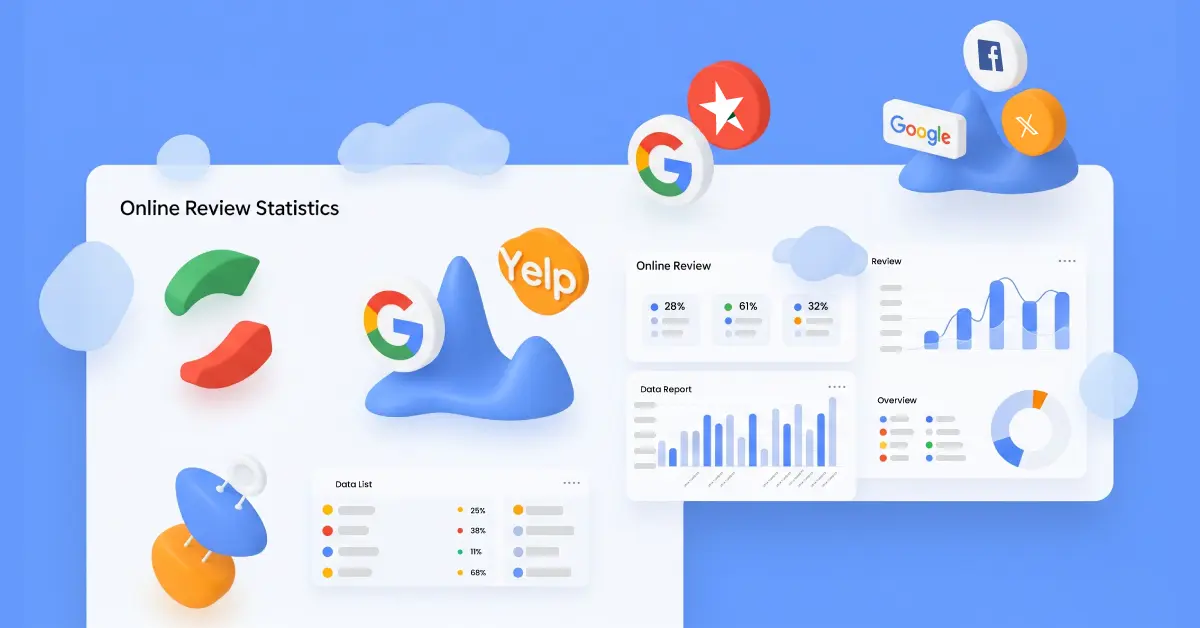


![8 Best Christmas Marketing Ideas for SMBs to Boost Sales [2025]](https://krofile.com/blog/wp-content/uploads/2025/12/Christmas-Marketing-Ideas.webp)


